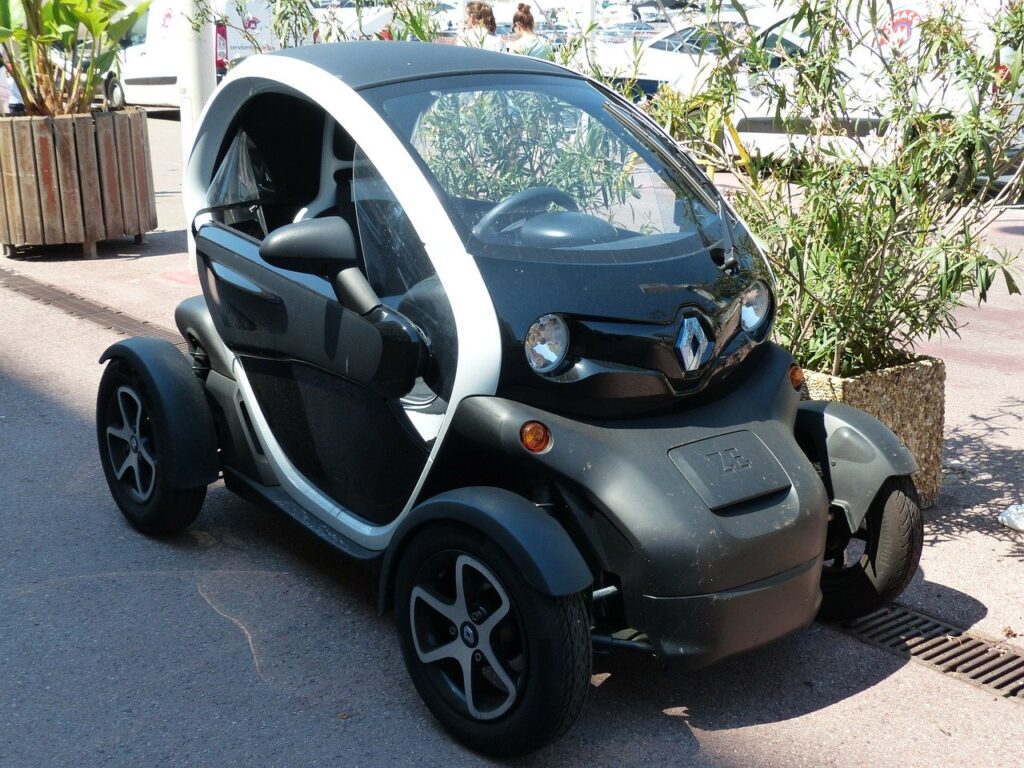Peter F. Drucker, management guru, once said: “If you want something new, you have to cease doing something old.” Since the introduction of the automobile in the early twentieth century, automotive designers have been seeking to do just that. Automobiles have been their canvases on which they’ve painted their wildest fantasies, fulfilled the needs of the general public, and addressed society’s environmental problems.
The general public does not always appreciate all of their labor. In reality, some of the concepts that looked brilliant in theory turned out to be some of the most bizarre developments in the automotive industry.
The Chicago Car Show, one of the country’s oldest, will be held in February as part of the new year’s lineup of significant auto events. The automotive industry gears itself for the Next Big Thing has compiled a list of the weirdest-looking cars in history.
The curvy shape of the car was inspired by Art Deco and NASA imagery when Chrysler unveiled the sleek, aerodynamic Streamline X “Gilda” in 1955. Also, to meet the needs of city dwellers and the environment, designers have come up with increasingly bizarre autos, such as those with only three wheels. Mini Coopers, for example, has risen to the status of four-wheel movie heroes.
We mainly focused, but not entirely, on cars that could be purchased by the general public for inclusion in our list. We also listed several concept vehicles and vehicles that are only available in limited quantities.
Stout Scarab
> Year introduced: 1935
> Manufacturer: Stout Motor Car Company
Aircraft designer William Bushnell Stout was responsible for the vehicle’s shape, which was fashioned like a beetle. By the 1930s, American cars had expanded in size and strength, and this early minivan with a long wheelbase would have been great for anyone who could afford to travel during the Great Depression. The automobile included ambient lighting, thermostat-controlled heating, and power door locks. Stout drove this $5,000 egg-shaped car for 250,000 kilometers. We’ll never know if it would have struck a chord with the general population because it was never mass produced.
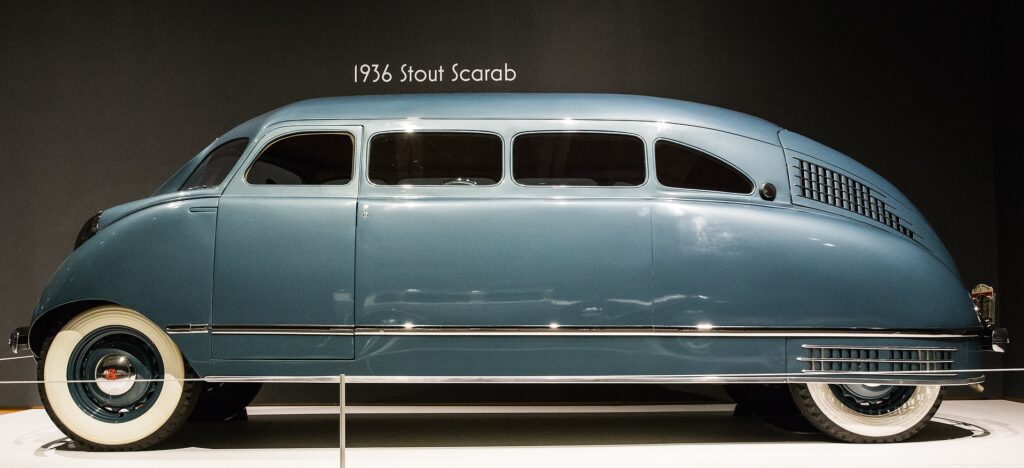
Thunderbolt
> Year introduced: 1940
> Manufacturer: Chrysler
The form of the vehicle was inspired by the supercharged locomotives that crisscrossed the country in the late 1930s. One of the earliest automobiles with power windows was the Thunderbolt. The air intake is located behind the bumper, thus there is no grill. Other innovations included a retractable steel roof, which was one of the first in the United States, and headlamps that opened at the touch of a button.

Norman Timbs Special
> Year introduced: 1948
> Manufacturer: Norman Timbs
Norman Timbs, a racing engineer, designed the streamlined vehicle with the forward-thrusting cockpit. Timbs, who would later work for Preston Tucker, a visionary automobile designer, designed a vehicle with an undulating yet beautiful form. The body was built of aluminum while the chassis was made of aviation tube material.

Tasco
> Year introduced: 1948
> Manufacturer: The American Sportscar Company
Tasco was named after the American Sportscar Company, and its design resembled a car that was about to grow wings. With the age of rockets just getting started and “right-stuff” pilot Chuck Yeager breaking the sound barrier in 1947, this isn’t surprising. Gordon Buehrig, a well-known car designer who worked for Packard, GM, and Stutz, designed the vehicle, which was influenced by aviation controls. There were also references to previous airplanes, such as an enclosed cockpit. Glass panels might be raised over the driver and passengers. Each of the four wheels was completely encased.

(Ghia) Streamline X “Gilda”
> Year introduced: 1955
> Manufacturer: Chrysler
With the advent of the space era approaching, Chrysler created the Streamline X “Gilda,” a spaceship-inspired concept automobile (Ghia). In 1955, the Turin Auto Show saw the premiere of the turbine-powered vehicle. With this futuristic passenger automobile, the designers hoped to achieve better aerodynamics. Giovanni Savonuzzi, an Italian designer, was responsible for the car’s design. The concept was commissioned by Virgil Exner, Chrysler’s design director. A sleek aluminum body sat atop a square-tube chassis on the Gilda.

KR200
> Year introduced: 1956
> Manufacturer: Messerschmitt
The KR200, or Kabinenroller, was designed by Messerschmitt, a firm known for producing deadly fighter planes during WWII. In its initial year, 12,000 of the bubble vehicles were made. This odd-looking car, which resembled a Volkswagen in appearance, had three wheels and weighed just 500 pounds. The bubble-enclosed single-door vehicle could only comfortably accommodate one passenger. The car’s controls were all pushed buttons rather than rotating knobs.
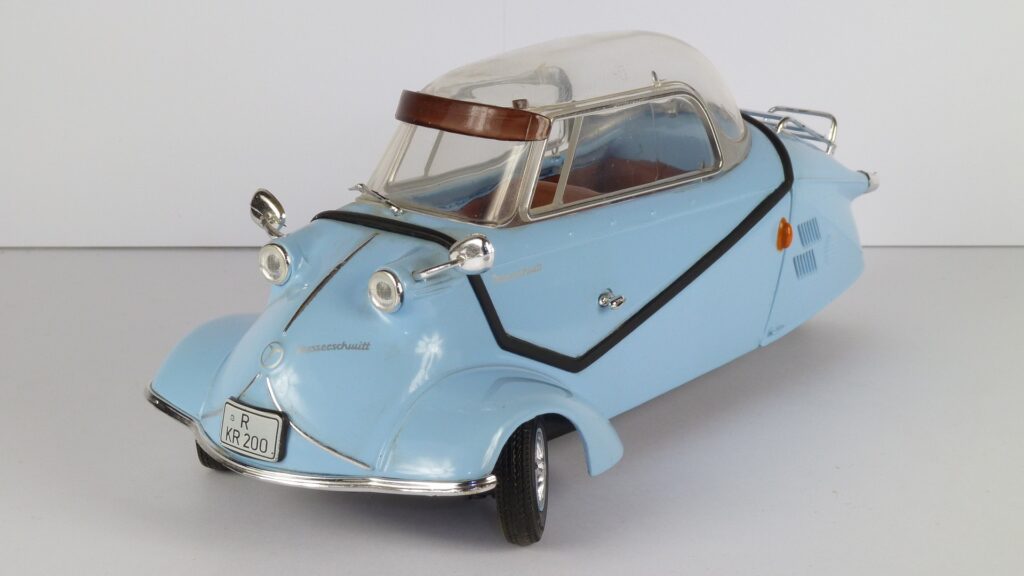
Centurion
> Year introduced: 1956
> Manufacturer: Buick
Few automobiles evoke the 1950s more than the Centurion, which looks like something out of the classic comedy “Happy Days.” The bubble top, which was influenced by the aerospace industry once again, was layered over a fiberglass body with leather seats. Without tail fins, what 1950s vehicle would be complete? Only one of the cars is still in existence, and it is housed at a museum in Michigan.

Creator: ERIC KILBY
Isetta
> Year introduced: 1956
> Manufacturer: BMW
Another “bubble car” from the 1950s was BMW’s Isetta. The three-wheeled vehicle had a modest 9.5 horsepower engine when it originally appeared. To protect it from toppling over, the makers eventually installed a fourth wheel at the back. It was difficult to get inside the automobile. Because there were no side doors, passengers had to enter through the vehicle’s front door. Passengers sat on a bench once inside. The automobile had excellent gas mileage, and longer excursions could be made with bigger luggage on an exterior rack.


Cyclone
> Year introduced: 1959
> Manufacturer: Cadillac
When the Cadillac Cyclone, a concept automobile, appeared in the late 1950s, it definitely looked the part. The rocket-inspired vehicle, which had two black cones in place of headlights, was created by concept-car master Harley Earl and appeared to be something Flash Gordon would drive. It was covered with a Plexiglas bubble canopy. The automobile also included a radar system that alerted the driver to approaching objects. Like today’s minivan doors, the doors slid to the slide.
Amphicar
> Year introduced: 1961
> Manufacturer: Amphicar Corporation
James Bond fans will remember the Lotus Esprit that was transformed into a submarine in the 1977 film “The Spy Who Loved Me.” The Amphicar, a brainchild of German engineer Hans Tippel, who had been working on the concept since the early 1930s, was not as elegant or opulent. The vehicle featured two propellers that could achieve speeds of up to seven knots once it hit the water. It used its front tires as rudders. Despite the exorbitant price tag, around 4,000 of them were sold, with President Lyndon B. Johnson among the owners.
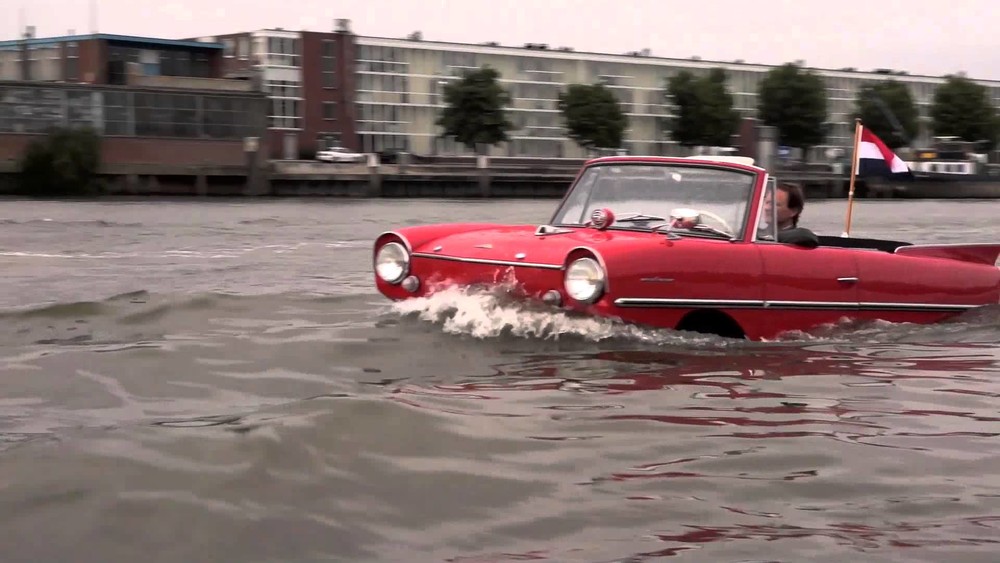
Peel P50
> Year introduced: 1962
> Manufacturer: Peel Engineering Company

No one will mistake the British-built Peel P50 for a muscle vehicle at 4.5 feet long. Guinness World Records claims that the three-wheeled vehicle was formerly the tiniest automobile produced. Only 50 were made, and those that are still around feature on British television shows as a novelty item. One headlight, one windshield wiper, and one door make up the vehicle. It also just has one seat.
Mini Moke
> Year introduced: 1964
> Manufacturer: British Motor Company
The Jeep, which was utilized by the Allies during World War II, provided the inspiration for the British Motor Company’s Mini Moke. The vehicle’s low clearance made it unfit for military use. There were no doors on the Mini Moke, and there were no side windows or a hard top. Between 1964 and 1992, about 50,000 Mokes were sold. It was popular in tropical locations like the Caribbean and Hawaii, and it was particularly popular with surfers. Starting in 2017, Moke America released an electric version that is solely available in the United States.

Lotus Europa
> Year introduced: 1966
> Manufacturer: Lotus Cars
Car purchasers praised the Lotus Europa’s handling and the fact that it was designed to reduce drag. Colin Chapman, the creator of Lotus, intended the automobile to have a balanced weight distribution and be compact and light. The vehicle was built of a light fiberglass composite. Buyers also liked that it was less expensive than the Lotus Elan. The style, on the other hand, was lacking. Inside, the chairs were locked in place, and drivers had to manually raise and lower the pedals. Lotus ceased manufacturing in 1975, after about 9,000 vehicles had been sold.
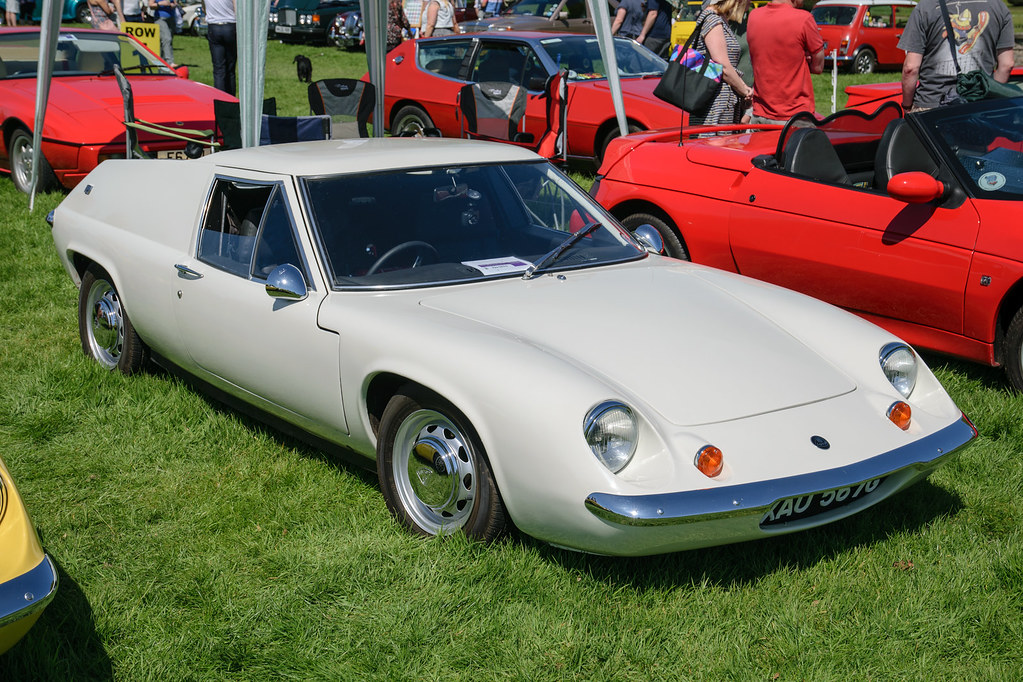
Reliant Robin
> Year introduced: 1973-1981, 1989-2001
> Manufacturer: Reliant Motor Company
The Reliant Robin was another British-built three-wheeled vehicle, but unlike the Peel P50, which had a single wheel in the back, the Reliant Robin had a single wheel in front. The automobile was designed in this manner to allow it to be driven on English roads with only a motorbike license. The fiberglass Robin was debuted in 1973, and drivers immediately discovered that the single front wheel caused the car to wobble. Other concerns included the car’s doors cracking when it was subjected to high winds. The steering wheel might come loose at any time without notice. Despite this, 63,000 cars were sold.

The Thing
> Year introduced: 1969
> Manufacturer: Volkswagen
Although naming a car “The Thing” may not have been one of marketing’s greatest achievements, the vehicle was produced from 1969 until 1980. The Thing was created in response to a request from European armed forces for a vehicle akin to the American Jeep. The Kubelwagen was a car manufactured by Volkswagen. It was renamed The Thing when it arrived in America in 1973. It was a plain car with little design. It had a considerable amount of ground clearance and large windows. Except for seat belts, there was nothing in the way of safety measures.

Brat
> Year introduced: 1978
> Manufacturer: Subaru
Subaru sought to enter the truck market in the United States, but there were taxes on foreign-made pickups. The Japanese company’s answer was to install many rear-facing seats in the truck’s bed and categorize it as a passenger vehicle. Although the seats were neither comfy nor secure, the modification allowed the automobile to avoid the tariff penalty. “Bi-drive Recreational All-terrain Transporter” was the acronym for “Bi-drive Recreational All-terrain Transporter.” President Ronald Reagan was one of its owners, and he drove it around his California ranch.

Prowler
> Year introduced: 1997
> Manufacturer: Plymouth
When does a hotrod cease to be a hotrod? When it’s a Prowler on the loose. The Plymouth-built automobile had just 250 horsepower, and its rear tires were only 295 millimeters wide, which was considered insufficient for a hotrod. On websites such as motor1.com, car aficionados claimed that the Prowler “was influenced, if not copied, by a classic roadster design by the legendary Chip Foose.” They complained that the trunk was too tiny, in addition to the fact that it was neither powerful or pleasant to drive. When Plymouth went bankrupt in 1999, the model was taken over by Chrysler. The Prowler sold 11,700 units until being phased out in 2002.

Multipla
> Year introduced: 1999
> Manufacturer: Fiat
The Fiat Multipla is widely cited as one of the most obnoxious automobiles ever produced. The vehicle, which never made it to the United States, resembled a minivan in appearance but had the body of a station wagon in the lower half. Two of the headlights were flush with the windshield, and the high windows appeared out of scale. It had a boxy appearance.
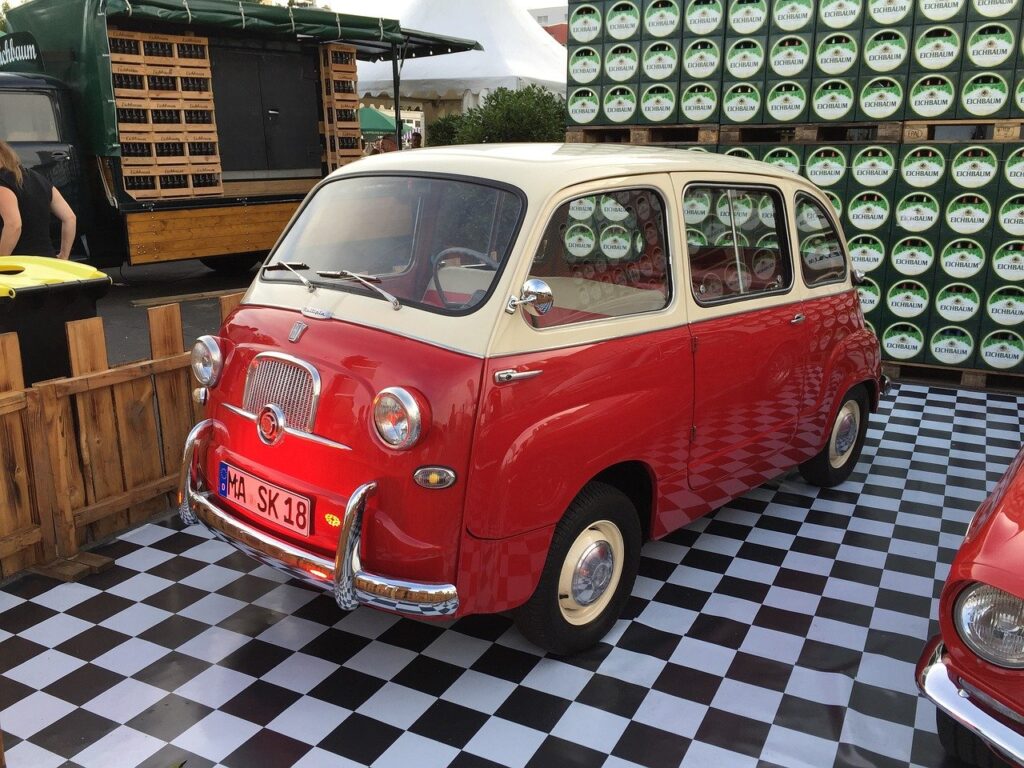
Aztek
> Year introduced: 2001
> Manufacturer: General Motors
From the start, the Aztek was chastised for its unusual design. It featured a two-tiered top and a truncated rear. Lights and vehicle grilles appeared to be strewn everywhere. You can’t keep an ugly automobile down, though. On the television series “Breaking Bad,” the Aztek was the automobile used by crystal meth-cooking chemistry teacher Walter White, and it has found a niche among millennial car buyers.

Twizy
> Year introduced: 2012
> Manufacturer: Renault
The Twizy is an electric two-seater classified as a “quadricycle” by the European Union. To get entry, the doors rise upward. The Twizy has a peak speed of 56 mph and a driving range of 56 miles. When it was released in 2012, it was Europe’s best-selling fully electric vehicle.
